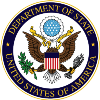U.S. Commitment to #EndImpunity for Crimes Against Journalists
By: Mario Crifo, Spokesperson for the Bureau of Democracy, Human Rights and Labor Affairs at the U.S. Department of State
In 2007, Ajmal Naqshbandi was abducted by Taliban fighters in Afghanistan and later beheaded. He was a local journalist and “fixer” who helped visiting international journalists gather information and report on the conflict in Afghanistan.
In October 2015, Sami Jawdat Rabah was abducted by Da’esh fighters in Syria, brutalized, and later killed, with a video of his killing made available for the entire world to see. He was a reporter for the Syrian Observatory for Human Rights working to document the abuses of the Syrian regime and of Da’esh.
In June 2016, Sagal Salad Osman was attacked and gunned down as she left a university class in Hodan District, Somalia. She was a reporter with Somali National Television and Radio Mogadishu where she worked to give voice to Somali demands for an end to the violence there.
The murder of these journalists is shocking on its own. What’s even more troubling is that none of the perpetrators of these senseless acts have been brought to justice. In many places around the world, those who threaten, kidnap, beat, and kill journalists because they do not agree with what they say do so with impunity.
The Committee to Protect Journalists (CPJ) estimates that so far in 2016 at least 36 media professionals have been killed, and to date none of those responsible have been apprehended or prosecuted. The United Nations counts over 700 journalists who have been killed for their work in the last decade.
These examples also represent a dangerous trend in violence against journalists. A growing number of journalists are being targeted by violent extremists and trans-national criminal organizations. Organizations such as Da’esh in Iraq and Syria, extremist militias in Libya, al-Shabaab in Somalia, Boko Haram in Nigeria, and drug cartels in Mexico -- all of these organizations are increasingly targeting journalists who threaten to bring the truth of their crimes and corruption to light. CPJ estimates that as many as 40
percent of crimes against journalists are committed by these kinds of groups and their supporters.
For these reasons, the United Nations declared today, November 2, International Day to End Impunity for Crimes Against Journalists.
This day reminds us that to do its job, a free press needs protection from violence and targeting.
As President Obama said on World Press Freedom day last year, “The world is a better and stronger place when individual conscience and a press that is free [are] allowed to function.”
The United States is committed to working to achieve that vision. This year we have made a major reinvestment in the Securing Access to Freedom of Expression Initiative. Dubbed SAFE, the initiative provides training in digital and physical security to journalists through regional centers to help them do their jobs while avoiding targeting. Through the centers’ advisory networks, SAFE also helps journalists share best practices for risk mitigation and build solidarity with one another, a form of protection in itself.
In addition, each year the Department of State conducts an annual Free the Press campaign in which we highlight the stories of journalists who have been imprisoned around the world and calls on governments to release them. We also bring more than 1,200 journalists and other media professionals to the United States on exchange programs and fellowships annually as we aim to help build a more resilient independent media and strengthening ties between foreign journalists and their American counterparts.
Through the Community of Democracies’ Freedom of Expression Working Group and the Freedom Online Coalition, the United States and other partners push back against impunity and other barriers to a free press. And, we promote the work of the UN Special Rapporteur on Freedom of Expression to place a spotlight on abuses against journalists around the world.
Together with others in the international community, we will continue working to eliminate impunity for crimes against media professionals. This is the right thing to do to secure justice for journalists and their families. Moreover, it is essential to achieving our goal of a press that is free to report on what they see and bring the truth to the public. These efforts play an indispensable role in the healthy functioning of our own democracy and also underpin democratic values around the world.
This story originally appeared on DipNote, the U.S. Department of State’s Official Blog.
